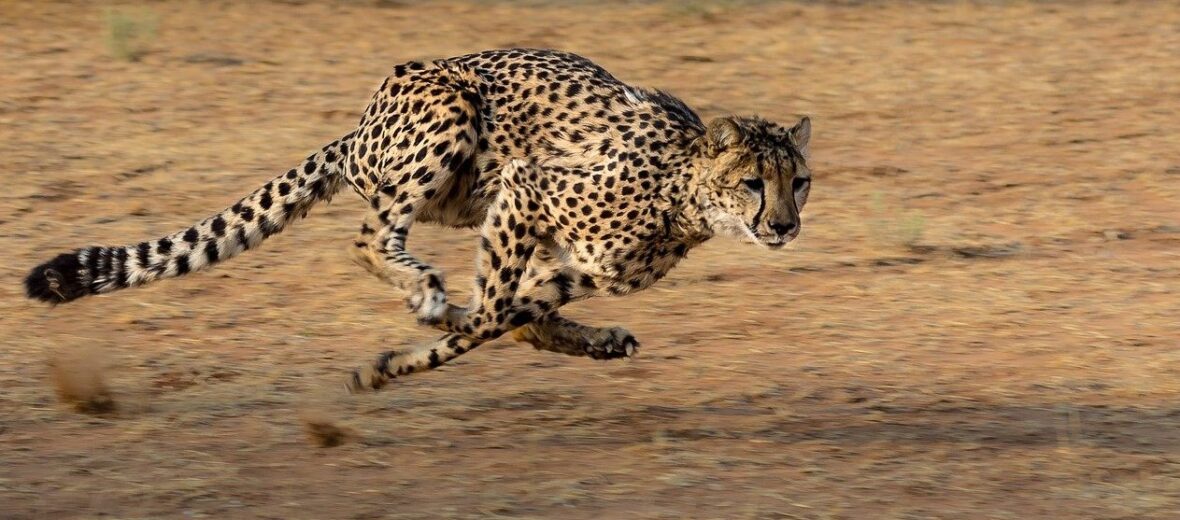
The fastest land animal on earth award goes to the cheetah! The cheetah hails from Africa and can be found mostly on the Savannah plains. They aren’t built for fighting, but rather for running. When running flat out, nothing can outrun these amazing cats. They are so quick and agile that they can even change directions in mid air. With only 6,600+/- individuals remaining in the wild, the IUCN lists African cheetahs are Vulnerable. Their populations are also decreasing. The threats they face are: habitat destruction, hunting, human interference, and diseases caused by invasive species.
First the Stats…
Scientific name: Acinonyx jubatus
Weight: Up to 160 lbs.
Length: Up to 4.9 feet, plus a 3 foot long tail
Height: Up to 3.1 feet, at the shoulder
Lifespan: Up to 12 years
Now on to the Facts!
1.) The cheetah hunts warthogs, gazelles, rabbits, and birds, among other animals.
2.) These cats are diurnal (awake during the day) hunters so as to avoid nocturnal (awake at night) competition. However, on full moon nights, they have been documented hunting at night.
3.) Cheetahs are found in sub-Saharan Africa. They inhabit open, grassy Savannah plains and open forest expanses.
4.) The word cheetah is derived from the Hindi word chita meaning “spotted one”.
5.) It has been documented that cheetahs have been in captivity for approximately 5,000 years and were first tamed by the Sumerians!
But wait, there’s more on the cheetah!
6.) 90% of Cheetahs die with in the first 3 months, 50% of which are taken by predators like lions and hyenas. The other 40% fail to survive due to inbreeding. Inbreeding causes, in part, a weakened immune system and the cubs just can’t fight off disease.
7.) After a 90 – 95 day gestation a female Cheetah will give birth to a litter of 3 – 5 cubs. The male doesn’t participate in the rearing of young. And the female will leave her cubs for up to 48 hours while looking for food; hence, in part, the high mortality rate.
Did you know…?
They can accelerate from 0 – 70 mph in just 3 seconds!
8.) Running at speeds of up to 70 mph only lasts about 60 seconds before they become exhausted due to overheating.
9.) These beautiful cats are solitary animals and communicate to each other via spraying urine or face rubbing saliva on things like trees and rocks. They can also vocalize via bleats, purrs, barks, hisses, growls, and even a high pitched chirping sound.
10.) The cheetah has a long, muscular, flat shaped tail. This tail functions as sort of a rudder. They use this ‘rudder’ to help control their sharp turns and keep their balance when running at top speeds.
Now a Short Cheetah Video!
Also, check out the Critter Science YouTube channel. Videos added frequently!
Want to suggest a critter for me to write about? Let me know here.



